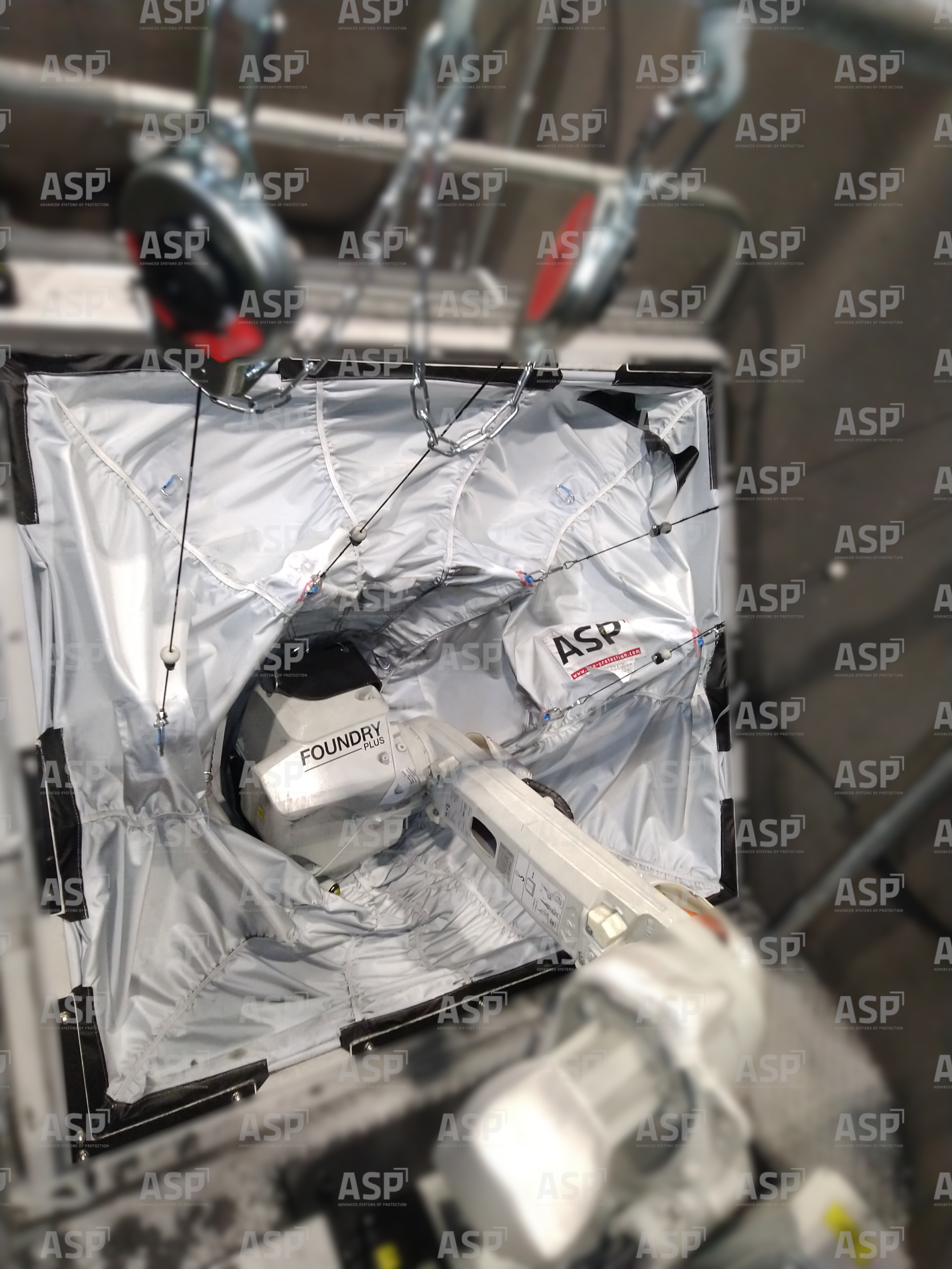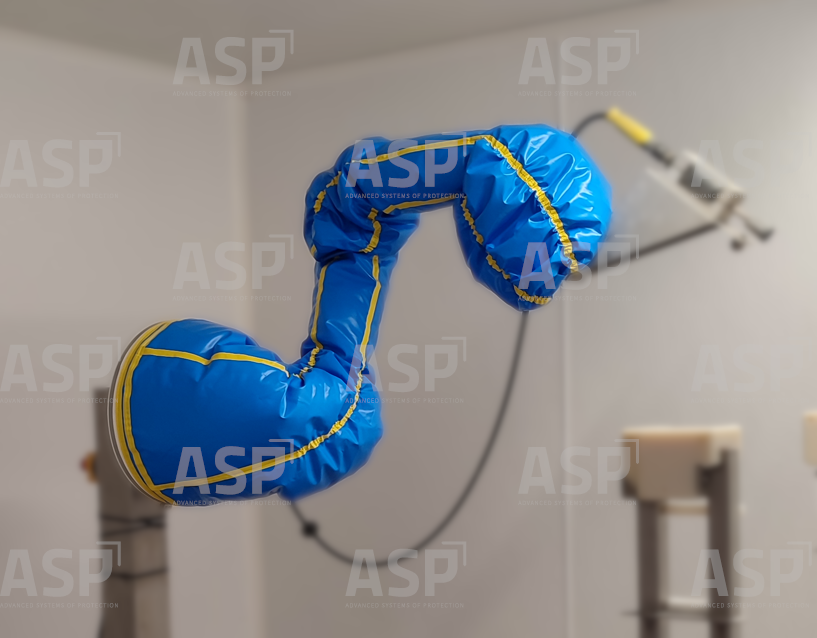Protect+ robot covers for complex environments.
ASP's Protect+ range protects industrial robots against intense sprays, even in confined spaces (such as sandblasting robots). The suits prevent infiltration into the mechanics, particularly for robots with complex trajectories.
The integration of sealed fixed or rotating rings guarantees perfect protection of the robot's various axes of rotation. In addition, T2N or T1A seals on the rotating rings further reinforce this seal, and the seams are also protected by heat-sealed strips.
As with the Easy range, Protect+ suits require very little tools. Cushions, which are used to provide optimum protection of the motors, help the suit to slide over the sharp edges of the robot. Velcro fasteners and press studs provide rapid access to the robot, thereby reducing maintenance time. Depending on the level of seal required, it is also possible to omit an opening. Furthermore, Protect+ suits can be repaired on site using the repair kit (or in the ASP workshop).
Window suits : the FST solution
Robots that need to remain isolated from the process often operate within a "window suit." The suit that encloses the window is completely sealed to protect the robot's body. It is particularly suitable for EcoClean cabins. Thanks to its patented "bellows" principle, it adjusts to the robot's cycles during the first trajectory, providing a perfectly tailored suit that prevents excess material, that could lead to the formation of pockets where process media (water, sand, shot...) can accumulate, causing protection malfunctions.
The FST solution was designed to facilitate the replacement of window suits while reducing the variety of references required for different cycles on two identical machines.
suits for shotblasting / sandblasting robots
The Protect+ range also offers specific suit shapes for shotblasting and sandblasting robots. It provides excellent resistance to abrasion, and, to provide a tight seal, the welding assembly technique is preferred.
It's worth noting that these suits can be ventilated and/or pressurized to protect the robots from extreme/high temperatures.

